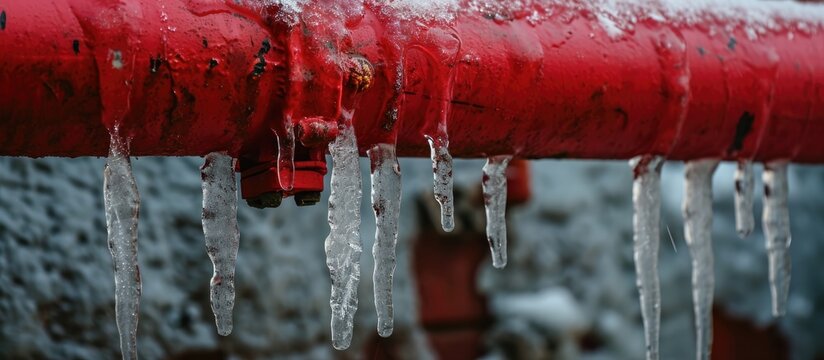The writer is making several great pointers about Prevent Frozen Pipes in general in the content which follows.

Cold weather can damage your pipes, particularly by freezing pipes. Right here's exactly how to stop it from happening and what to do if it does.
Intro
As temperature levels decrease, the risk of icy pipes increases, possibly resulting in pricey repair services and water damage. Recognizing how to stop frozen pipelines is vital for house owners in cold environments.
Prevention Tips
Protecting at risk pipes
Wrap pipes in insulation sleeves or utilize warmth tape to shield them from freezing temperatures. Focus on pipes in unheated or outside areas of the home.
Heating methods
Maintain indoor rooms appropriately heated, especially areas with plumbing. Open up closet doors to enable warm air to flow around pipelines under sinks.
Exactly how to determine frozen pipes
Look for lowered water circulation from taps, unusual odors or sounds from pipelines, and noticeable frost on subjected pipes.
Long-Term Solutions
Structural changes
Think about rerouting pipes away from outside walls or unheated locations. Include extra insulation to attic rooms, cellars, and crawl spaces.
Upgrading insulation
Invest in high-grade insulation for pipelines, attics, and wall surfaces. Proper insulation aids maintain regular temperatures and lowers the risk of icy pipes.
Shielding Outside Pipes
Yard hoses and outside faucets
Disconnect and drain pipes garden tubes before winter season. Install frost-proof faucets or cover exterior faucets with protected caps.
Understanding Frozen Pipes
What creates pipelines to freeze?
Pipes freeze when subjected to temperature levels below 32 ° F (0 ° C) for extended periods. As water inside the pipes freezes, it broadens, taxing the pipeline wall surfaces and possibly creating them to burst.
Risks and damages
Frozen pipes can lead to supply of water interruptions, property damages, and pricey fixings. Ruptured pipes can flood homes and create considerable architectural damage.
Signs of Frozen Piping
Recognizing frozen pipelines early can avoid them from bursting.
What to Do If Your Pipelines Freeze
Immediate activities to take
If you presume frozen pipelines, keep faucets open up to ease stress as the ice melts. Make use of a hairdryer or towels taken in hot water to thaw pipelines slowly.
Conclusion
Protecting against frozen pipelines requires aggressive steps and fast reactions. By recognizing the causes, indications, and preventive measures, house owners can shield their plumbing throughout winter.
6 Proven Ways to Prevent Frozen Pipes and Protect Your Home
Disconnect and Drain Garden Hoses
Before winter arrives, start by disconnecting your garden hoses and draining any remaining water. Close the shut-off valves that supply outdoor hose bibs and leave the outdoor faucet open to allow any residual water to drain. For extra protection, consider using faucet covers throughout the colder months. It’s also important to drain water from any sprinkler supply lines following the manufacturer’s directions.
Insulate Exposed Pipes
Insulating your pipes is an effective way to prevent freezing. Pipe insulation is readily available at home improvement stores and is relatively inexpensive. Pay close attention to pipes in unheated areas such as the attic, basement, crawl spaces, or garage. Apply foam insulation generously to create a buffer against the cold. You can also wrap your pipes in heat tape or thermostat-controlled heat cables for added warmth.
Seal Air Leaks
Inspect your home for any cracks or openings that could let in cold air. Seal any holes around the piping in interior or exterior walls, as well as the sill plates where your home rests on its foundation. Additionally, make sure to keep your garage door closed unless you’re entering or exiting. Leaving it open creates a significant air leak that can lead to frozen pipes.
Allow Warm Air Circulation
During cold snaps, it’s essential to allow warm air to circulate evenly throughout your home. Leave interior doors ajar to promote better airflow. Open kitchen and bathroom cabinets to help distribute heat consistently around the rooms. If you have small children or pets, be sure to remove any household chemicals or potentially harmful cleaners from open cabinets for safety.
Let Faucets Drip
A small trickle of water can make a big difference in preventing ice formation inside your pipes. When temperatures drop significantly, start a drip of water from all faucets served by exposed pipes. This continuous flow helps prevent the water from freezing. Additionally, running a few faucets slightly can relieve pressure inside the pipes, reducing the chances of a rupture if the water inside does freeze.
https://choateshvac.com/6-proven-ways-to-prevent-frozen-pipes-and-protect-your-home/
:strip_icc()/snow-outdoor-faucet-pipes-4af65d1e5e904fb1aa7bf74071fe5d89.jpg)
Do you really like more info about How To Avoid Freezing Pipes? Place a remark down the page. We will be delighted to know your feelings about this posting. We hope to see you back again before long. Are you aware of somebody who is very much interested in the subject? Why not share it. We cherish reading our article about Winter Plumbing Precautions: Preventing Frozen Pipes.
Click Here